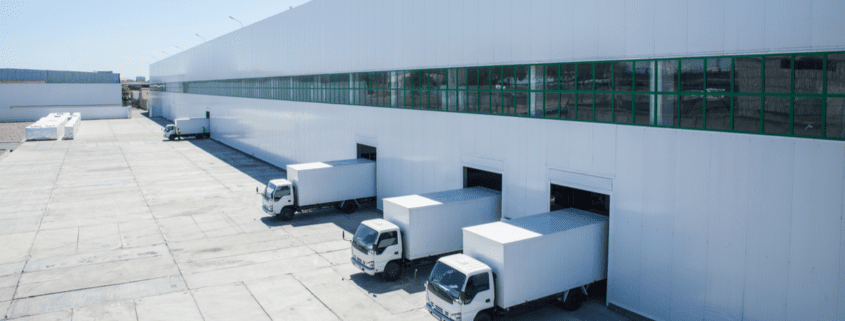E-Commerce Returns and CRE Warehouse Demand: Dilemma or Opportunity?
As the e-commerce sector continues to expand, the demand for warehouse space to process and distribute orders is increasing. One in every three dollars of monthly discretionary income is now spent online. Consumers are motivated to make online purchases primarily due to the convenience. After all, the see-click-buy purchasing methodology requires virtually no energy or time compared to the process of driving to a store, locating a product, and waiting in line. Plus, the product is delivered right to the consumer’s door. For many purchases, online ordering is a go-to, and for repeat purchase of daily-use products, it is a beneficial arrangement for both seller and buyer.
At first glance, online retailers are stomping out brick-and-mortar retail facilities. But in reality, e-commerce is a mixed bag that faces its own share of challenges and drawbacks. A growing number of products purchased online are returned for various reasons, and it is necessary for retailers to have processes and spaces prepared to handle these shipments, known as reverse logistics.
Read ahead to see how e-commerce returns create challenges for online retailers but can be an opportunity for CRE professionals.
A Dilemma For Retailers
Consumer habits are not without consequences. People who regularly make online purchases often buy several products with the intention of returning those that do not suit their needs. This behavior drives up return rates to as high as 30% of online purchases, compared to under 9% of brick-and-mortar retail purchases. For products like apparel, the return rate is often even higher because these items cannot be tried on to assess fit prior to purchase. In fact, 75% of consumers report returning apparel and accessories purchased online at some point.
Adding to the problem, online retailers face immense consumer pressure to allow free and easy returns. Many consumers are hesitant to buy online if they cannot return an item, and 67% check for ease of return before purchasing. As a result, e-commerce retailers are forced to provide a streamlined and inexpensive return process to remain competitive.
For e-commerce tenants, such as online retailers and distributors, space is at a premium. Processing returned shipments takes additional time, space, and equipment, leading to a demand for up to 1 million square feet of leased warehouse space total per company to accommodate reverse logistics operations in addition to fulfillment.
And e-commerce companies aren’t the only parties in a bid for warehouse space. As such, competition for facilities that can accommodate modern shipping operations has never been higher. Average cost per square foot has climbed 5% year over year, and vacancy rates in some markets are down to 2.9%.
An Opportunity for CRE Professionals
Due to the popularity and growth in the e-commerce sector, it is likely that warehouse demand for such companies will continue to grow. Add to this demand the need for appropriate return-processing, and the bid for larger and more diverse industrial spaces becomes even more competitive, driving profit.
While online retailers must prepare to handle a high volume of returns, CRE professionals working in the industrial asset class may benefit from recognizing these needs and offering spaces that are built with product returns in mind. Reverse logistics operations generally require 15-20% more space than that which is required by comparable retailers who do not process returns. Further, an increased demand for suitable industrial spaces means lower vacancy rates and a higher possible risk-adjusted ROI – good news for CRE sponsors and investors.
And another consideration – over 80% of existing warehouse spaces are under 400,000 square feet, and 77% were built prior to the year 2000. These aging industrial offerings are often not suitable for modern operations, causing e-commerce retailers to seek out newer and bigger warehouses with features such as higher ceilings, additional loading space, better security, and improved tech capabilities. Retailers who offer return services may also wish to further automate the distribution process. Automation allows them to free up employees, who can then assess the state of returned items to decide what can be resold. This makes ground-up, tech-ready industrial builds more sought after, resulting in higher rents.
But older facilities in central locations may also be profitable, with minimal value-add measures, simply due to their proximity to suppliers and consumers. The costs associated with order fulfillment and processing can climb exorbitantly, especially when shipping is factored in, if facilities are difficult to access and not well connected by existing infrastructure – and when free returns for consumers must be paid for by retailers themselves. In these cases, locations that minimize shipping costs, especially for returns, are preferable. As a result, e-commerce tenants are more willing to pay premium rents for such locations, without requiring expensive upgrades.
E-commerce may frustrate professionals working in the retail sector, but industrial spaces can offer a satisfactory alternative as online retailers look for solutions to these new challenges. As consumer expectations evolve, the continued need for suitable industrial space could prove profitable for those who take the leap.
For more information on warehouse solutions and logistics, check out CRE Adaptive Reuse in Action: From Retail Storefronts to Distribution Centers



